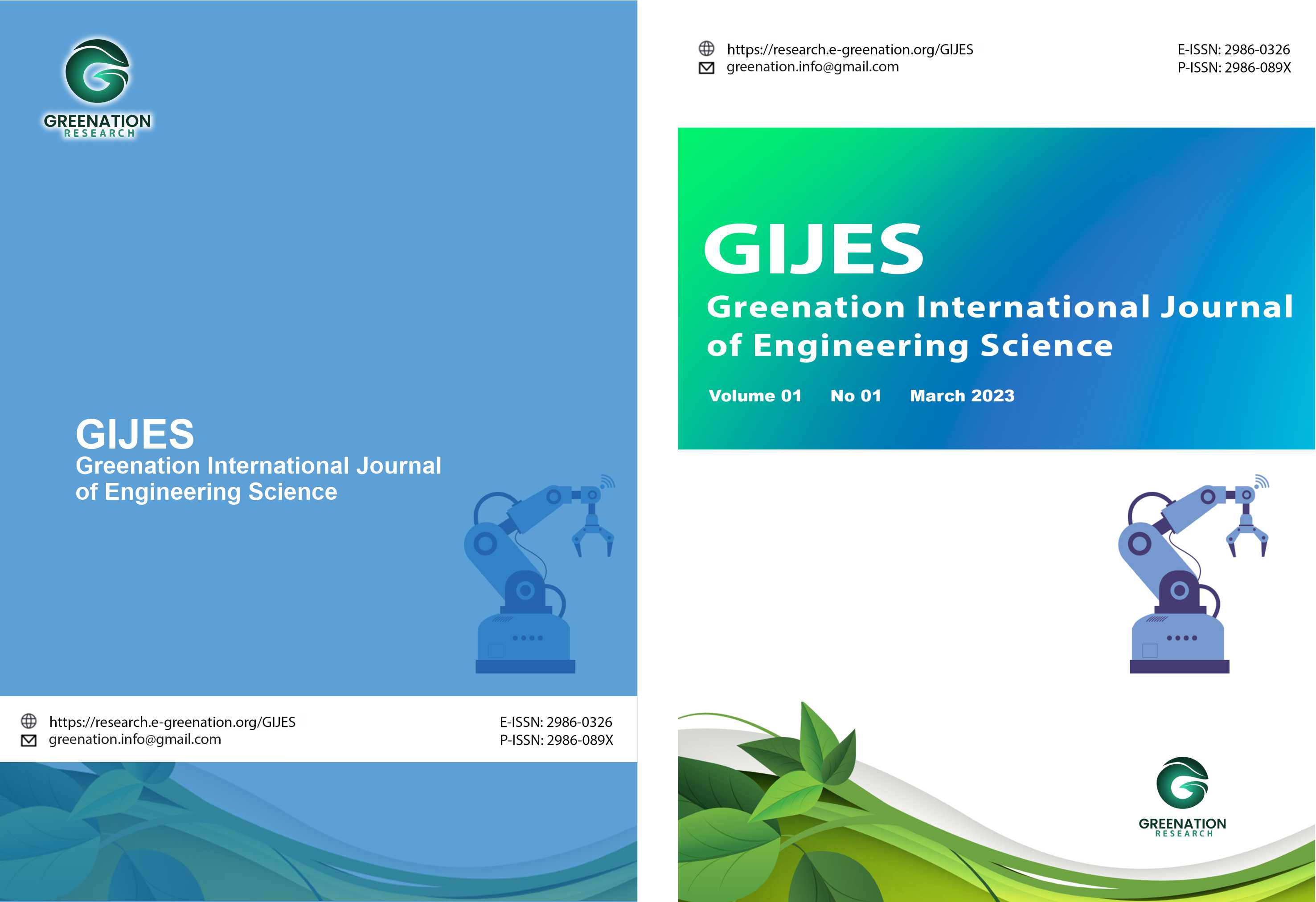Analysis of Spring Damage in the Chamber Actuator
DOI:
https://doi.org/10.38035/gijes.v2i2.116Keywords:
Spring, Void, Failure Analysis, Corrosion, MetallurgyAbstract
Spring, which has the function to help the valve operate so that it can be fully closed and fully open, has a very vital role in the continuous operation of the chemical industry. When a problem occurs, muddy fluid is found in the spring actuator chamber which causes the valve not to operate and not be in full close condition. The purpose of this study is to find the causes of the Spring Actuator failure in the chemical industry. This research was specifically directed at a broken Spring Actuator to determine the cause of the failure/damage. The tests carried out were: fractography, metallography (microstructure), chemical composition analysis, hardness test, and scanning electron microscope (SEM) energy dispersive x-ray (EDX) analysis. The results of the macrographic examination showed that the spring fracture had 2 fracture surface patterns. Spring B has a brittle fracture where the shape of the fracture is more even and does not show residual fracture. While springs A, C, and D experienced ductile fracture. The results of metallography found corrosion products in the surface area of the spring. There are non-metallic inclusions in the form of sulfides and microvoids. The microstructure is tempered martensite. From the results of the chemical composition of the spring material, it still meets the JIS G 4801 grade SUP 12 standard with the addition of Silicon and Chrome. The hardness test results have a hardness value of 518.4 HV. The spring hardness value is above the maximum hardness limit of SUP 12 material. The SEM test results of the spring sample show the presence of non-metallic inclusions with elongated morphology and micro-sized voids. The results of the EDX test showed a Sulfur content of 4.71 wt% in non-metallic inclusions and the content of Fe and O elements in the defective holes which were corrosion products. From this study, it is known that the factors causing damage to the springs are manufacturing process errors, material defects, and corrosive environments.
References
Djoko Wiyono., Buku Panduan Analisa Kerusakan [Damage Analysis Handbook]., (2003), “Sifat Mekanik Material [Mechanical Properties of Materials]”., Program Pasca Sarjana Universitas Indonesia. Jakarta.
ASM Metals Handbook, Vol. 11, 2009,“Failure Analysis and Prevention”, American Society for Metals
ASM Metals Handbook, Vol. 9, 2009, “Metallography and Microstructures”, American Society for Metals.
ASM Metal Handbook, Vol. 12, 2009, “Fractography”, American Society for Metals,.
Callister, Wiliam D. 2007, Material Science and Engineering 7 th . Jhon Wiley & Sons, Inc. Kanada.
Chen, Kui etc, 2019, “Effects of quenching and tempering temperature on microstructure and tensile properties of microalloyed utra-high strength suspension spring steel”, Northeastern University, Shenyang,
Ir. Asyari Darami Yunus.SE.M.Sc. 2010,”Diktat Mekanika Kekuatan Material [Book on Mechanics of Strength of Materials]”
JIS Handbook, 2015, “Ferrous Materials & Metallurgy II”, G 4801,
Niranjan, Singh. 2013, General Review Of Mechanical Springs.
Syrett, BC. S Begum. C. 2016, “Corrosion, Crevice”, Reference Module in Materials Science and Materials Engineering,
Yadla, Satya Vani. et al., 2012 “ a Review on Corrosion of Metals and Protection” International Journal Of Engineering Science & Advanced Technology.
Downloads
Published
How to Cite
Issue
Section
License
Copyright (c) 2023 Raven Rullyapatra Nasution, Rudi Saputra

This work is licensed under a Creative Commons Attribution 4.0 International License.
Copyright:
Authors who publish their manuscripts in this journal agree to the following conditions:
- Copyright in each article belongs to the author.
- The author acknowledges that Greenation International Journal of Engineering Science (GIJES) has the right to be the first to publish under a Creative Commons Attribution 4.0 International license (Attribution 4.0 International CC BY 4.0).
- Authors can submit articles separately, arrange the distribution of non-exclusive manuscripts that have been published in this journal to other versions (for example, sent to the author's institutional repository, publication in books, etc.), acknowledging that the manuscript has been published for the first time in GIJES.

























